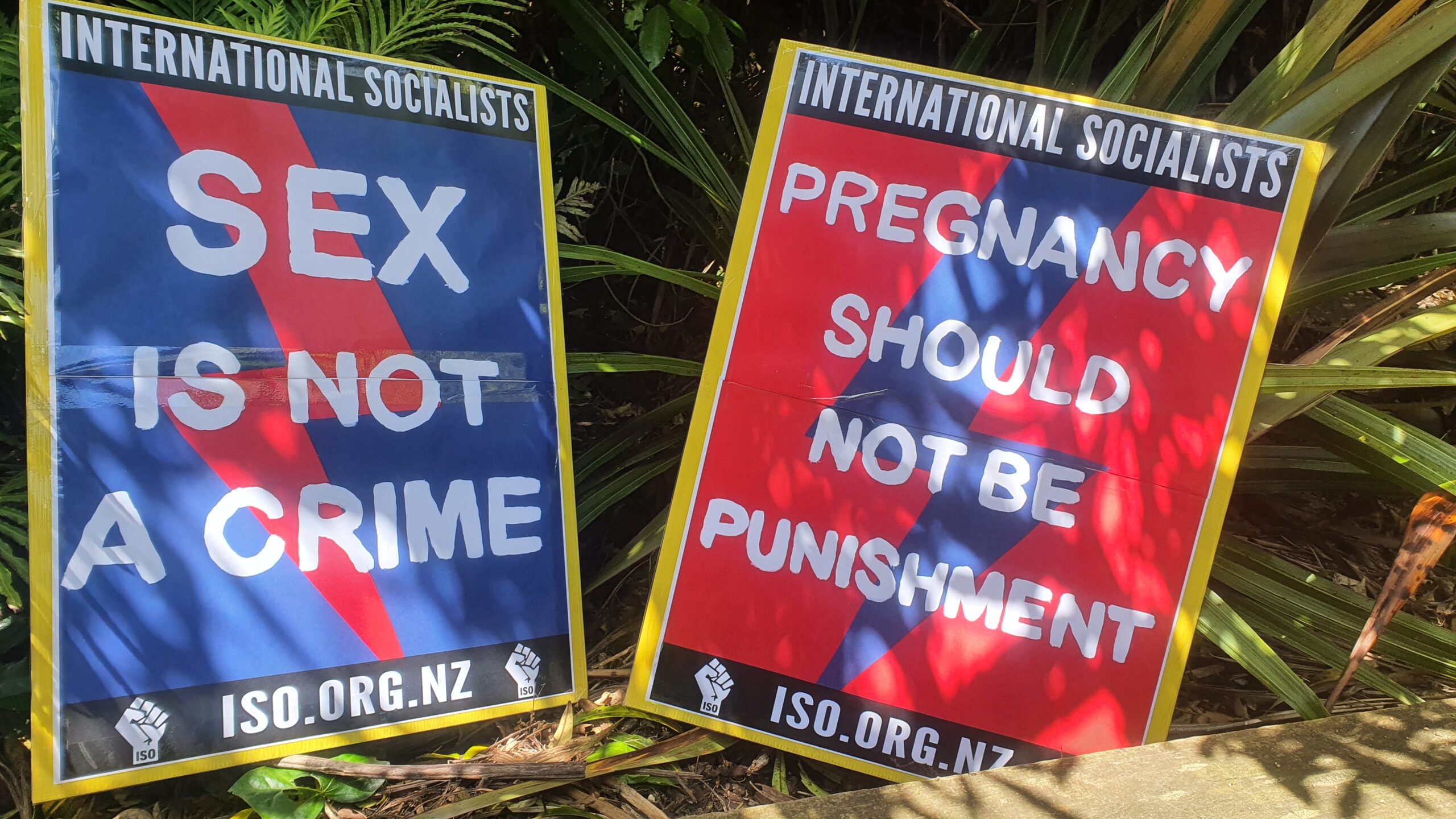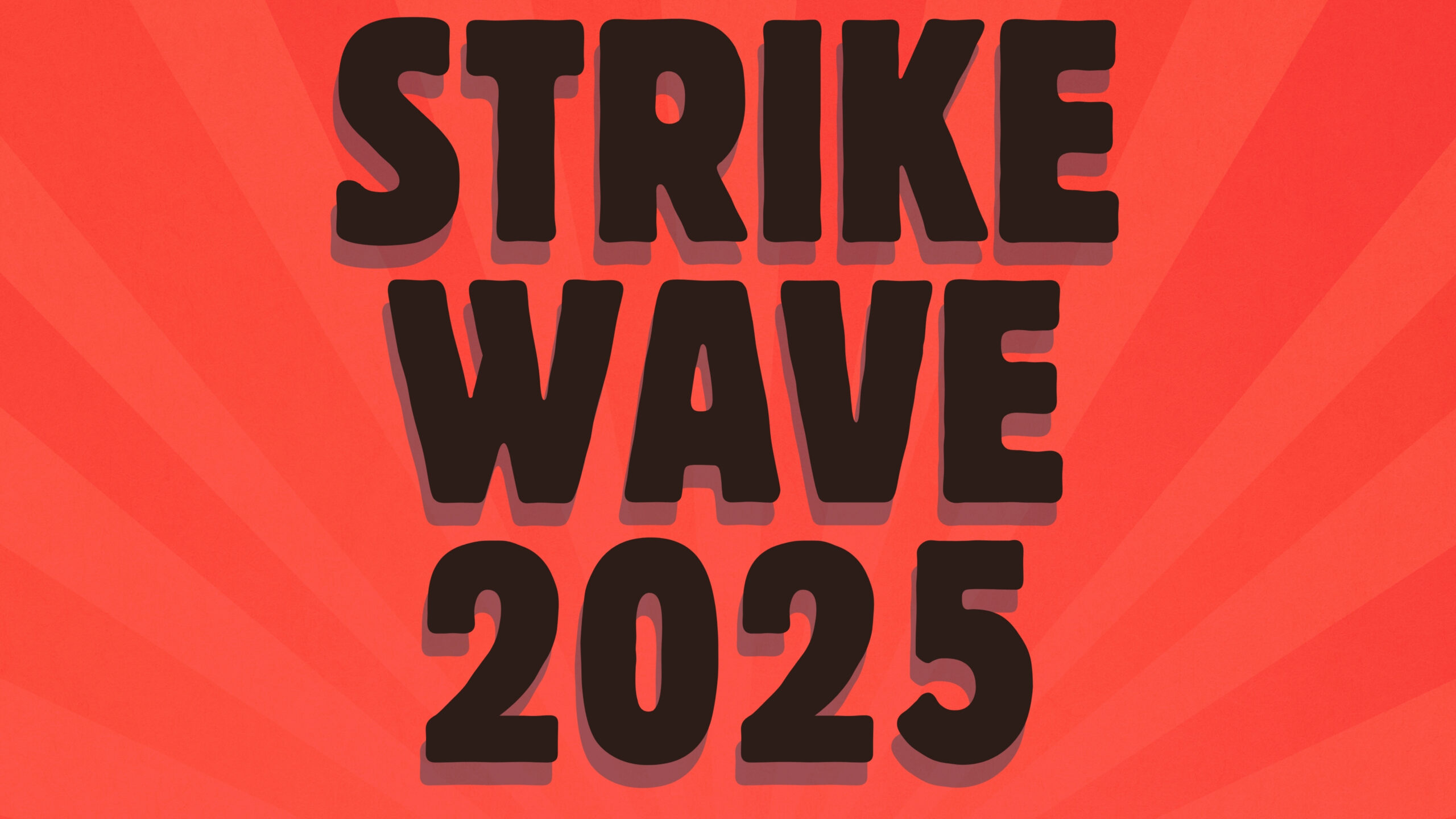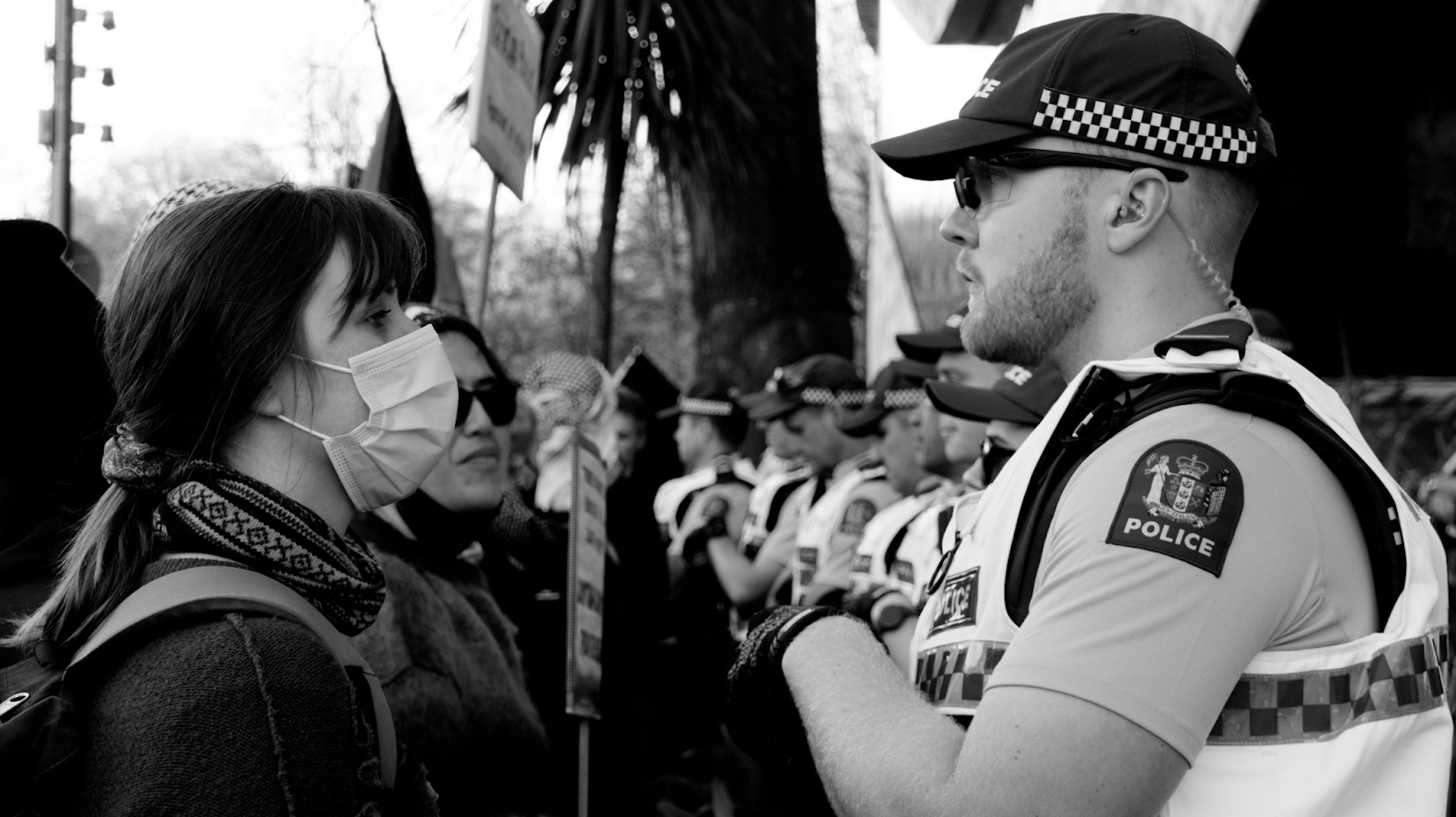In Dunedin, the coming of a new onslaught in the media campaign against gangs was heralded by a mildly positive article in the Otago Daily Times in January 1996 concerning Mangu Kaha Aotearoa (Black Power New Zealand) setting up house in Ravensbourne, an outer Dunedin suburb. Accompanied by a photograph of a Mangu Kaha member preparing the evening meal, the article quoted assurances by the gang that they had no wish to antagonise the local residents. They had, they said, put their criminal past behind them and were eager to become productive members of the community.
Within two days, an Otago Daily Times editorial was emphasising the “unneighbourly” attributes for which, the editorial implied, gangs seem to be solely responsible – such as noisy parties, the revving of cars, and the erection of high fences around their property. It also described “gang clashes” in the centre of the city which put Dunedin people in fear for their safety and retailers in fear for their businesses, after an incident in which members of the Highway 61 gang – which had been based in the city for a number of years – challenged Mangu Kaha members.
In May 1996, four months after this, the Christchurch Press entered the fray after a woman was accidentally shot by Highway 61 members. This gave Mike Moore, the Labour MP for Christchurch Central, the platform he needed to launch his anti-gangs campaign. While he described the supposed activities of gangs in this country, with much speculation and little use of facts, it was obvious that his fearmongering had another eventual aim – the boosting of police numbers. In his article (published, it must be noted, in the middle of an election year) Moore announced:
[gangs] are no longer groups of “hoons” who smash up the occasional pub, but are now involved in Mafia-style organised crime, such as running brothels and escort agencies, and being major players in the drug world.
He castigated officials who had, over the previous three years, made loans totalling $635,000 (or 1% of total loans made to community organisations) to gangs for 42 different projects which were, in the main, associated with job creation.
While his article was noticeably lacking in specific detail, it succeeded in launching a media panic: positive gang stories were suddenly displaced by stories about intimidation and terror. In Dunedin, the Mayor, Sukhi Turner, used the local newspaper to urge city residents to “band together against gangs, and neutralise the evil forces in our society” – although members of gangs are also city residents. By the time the Road Knights gang built a 3.5 metre high fence around their Dunedin property, the media had reached the state of a feeding frenzy and what was essentially a bureaucratic wrangle with the Dunedin City Council (how many residents, after all, have high fences around their properties?) became the beacon for a “long trail of illegal and occasionally violent incidents.”
A trawl through the facts shows that the long trail of illegality involved exactly: the erection of one fence, one noisy party (closed down by 20 police, including three dog handlers, and CIB officers), four police drug raids, a brawl with another gang which resulted in a stabbing (the “occasionally violent” incident referred to by the editorial), and an illegal bar.
Unfortunately for both the media and Mike Moore, there was nothing to be uncovered concerning drug running, money laundering, prostitution and protection rackets, or any other symptoms of organised crime as described by Moore in his article. The best the Dunedin newspaper could come up with along these lines was a special feature in a Saturday edition detailing the so-called drug running activities of the Mongrel Mob who were apparently repossessing the belongings of parents whose teenage children had run up “drug debts” while forcing the children themselves to become drug dealers to repay what they owed. It was a horrifying story, but – even if it was literally true – it was hardly indicative of the existence of the Mafia-type organisation the media were looking for.
Fortunately for Moore, Greg O’Connor, the secretary of the New Zealand Police Association, came to the rescue by predicting the coming of a gang in 1998 which would replace Highway 61 and would set itself up as direct rivals to Hells’ Angels, causing gang wars in this country on an unprecedentedly violent and bloody scale. Two disguised “former gang members” attested to this on video and O’Connor urged an immediate increase in police numbers to deal with the coming threat.
The New Zealand Police Association bolstered their claims by announcing that New Zealand already has the highest crime rate, including violent crime, per head of population in the Western world.
Examining O’Connor’s proclamation, one can see very little to worry about at all – he plays to the fear generated by current media campaigns concerning the internationalisation of gang activities, he appeals to national insecurity by claiming a major sophisticated gang is coming into New Zealand, but does not name this unknown gang. He appeals to fears concerning white supremacist groups by claiming the group will be replacing Highway 61, thus emphasising the race divisions among gangs which are, in any case, divisions imposed by wider social forces. He appeals to the fear of violence and lawlessness, the main tactic which our rulers have used to ensure the continued power of the police force since it was first formed to smash the powers of workers.
Predictably, the only substantiated facts one could glean from O’Connor’s pronouncements, and indeed Mike Moore’s campaign, were these: they wanted an increase in police numbers and powers!
A look at the law that was introduced in November 1997 shows how misled those who believed the media campaign hype had been.
The bill, originally titled the Harassment and Criminal Association Bill, was divided into seven different bills after being processed through its report and committee stages. These bills are: the Harassment bill, the Crimes Amendment bill, the Criminal Justice Amendment bill, the Misuse of drugs Amendment bill, the Summary Offences Amendment bill, and the Telecommunications Amendment Bill. Immediately obvious is the fact that these separate bills will have wide ranging applications, well beyond that of the control of gangs. The laws have created new offences (such as making membership of a gang, and erecting “fortifications” illegal), increased penalties for offences, permitted the use of electronic surveillance, and given police powers to search cars. And the new definition of a gang? Any association involving at least three people with criminal records (a definition which could cover virtually any organisation).
After presenting the bills, following their final readings, Justice Minister Doug Graham made their intent clear when he told parliament “although most measures are of general application, they will have particular impact on gangs.” Once again, gangs have been used to justify the introduction of yet more police powers to be used against all dissenting groups – especially those arguing for the rights of workers – rather than simply gangs. The 1996 Commonwealth Heads of Government Meeting in Auckland involved one of the largest police exercises this country has ever seen – yet it was not gangs, but unemployed workers and community activists who stood at the barricades.
The print media has played a major part in producing the climate of fear that has allowed these laws to be so speedily passed. Now that this has been achieved, coverage of gangs has all but died away. The mainstream newspapers have never, on the whole, been renowned for their positive coverage of workers’ issues, and it is in their support of campaigns such as this that one can see exactly where their loyalties lie. It is not white supremacist international gangs (doesn’t that sound more like the Business Roundtable?) that people are being made to fear, but people realising they have been duped and trying to do something about it.









